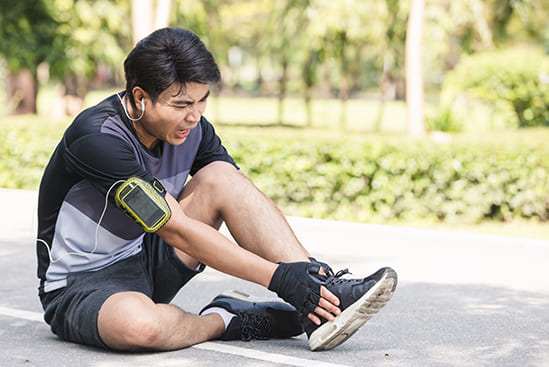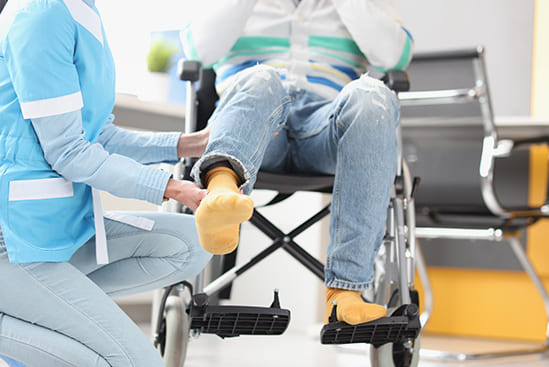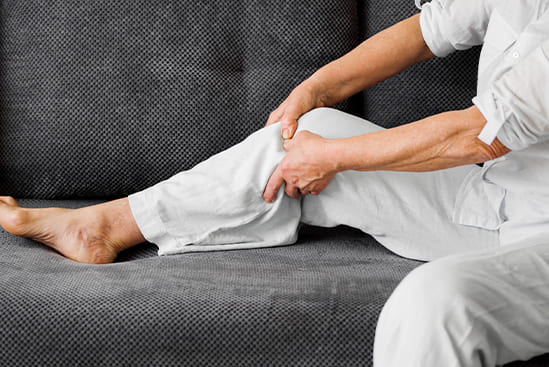
Synapse Physiotherapy
Physiotherapy and Athletic Performance
Physiotherapy plays a crucial role in enhancing athletic performance by optimising the physical capabilities of athletes and active individuals. Through a combination of targeted exercises, manual therapy, and injury prevention strategies, physiotherapists help athletes improve strength, flexibility, endurance, and overall movement efficiency. By addressing imbalances, correcting improper movement patterns, and facilitating recovery, physiotherapy not only aids in injury prevention but also accelerates recovery, enabling athletes to return to peak performance more quickly. Whether through post-injury rehabilitation or ongoing performance optimization, physiotherapy is an essential component of an athlete’s training regimen, helping them achieve and maintain their highest level of performance.
If you’re searching for “physiotherapy near me” to enhance your athletic performance, look no further than Synapse Physiotherapy. With four conveniently located branches, we’re ready to provide expert care wherever you need it.
In this article, we will explore how physiotherapy can significantly enhance athletic performance.
The Role of Physiotherapy in Sports Performance
In today’s professional sports environment, athletes face increasing physical and psychological demands. Sports injuries are now more prevalent and can significantly hinder an athlete’s ability to reach their full potential.
Common Types of Sports Injuries
Sports injuries can be broadly categorized into two types: acute and chronic.
Acute Injuries
Acute injuries occur suddenly, usually as a result of trauma. They include:
- Sprains: Ligament injuries caused by excessive stretching or tearing, commonly in the ankle and knee (e.g., ACL tears).
- Strains: Injuries to muscles or tendons due to overstretching or excessive force, often affecting the hamstrings and quadriceps.
- Fractures: Breaks or cracks in bones, often from high-impact activities or falls, with common sites including the wrist, collarbone, and leg.
- Dislocations: Occur when bones in a joint become displaced, with shoulder dislocations being particularly common in contact sports.
Chronic (Overuse) Injuries
Chronic injuries develop gradually due to repetitive stress on tissues. They include:
- Tendinitis: Inflammation of tendons from overuse, such as Achilles tendonitis and patellar tendinitis.
- Stress Fractures: Small cracks in bones resulting from repetitive impact activities like running or jumping.
- Bursitis: Inflammation of the bursae (fluid-filled sacs that cushion joints), commonly seen in the shoulder and elbow.
- Shin Splints: Pain along the shin bone (tibia) caused by repetitive stress, common in runners and dancers.
Risk Factors for Sports Injuries
Several intrinsic and extrinsic factors contribute to the risk of sports injuries:
Intrinsic Factors
- Age: Younger and older athletes are at higher risk. Youth are more prone to growth plate injuries, while older athletes face issues related to degenerative changes in tissues.
- Gender: Gender can influence the type and frequency of injuries.
- Previous Injury: A history of previous injury increases the risk of re-injury, often due to incomplete rehabilitation or residual weakness.
- Physical Condition: Poor physical conditioning, muscle imbalances, and lack of flexibility can predispose athletes to injuries.
Extrinsic Factors
- Training Load: Excessive training without adequate rest leads to overuse injuries. Sudden increases in training intensity or volume can also increase injury risk.
- Equipment: Inappropriate or poorly maintained equipment, such as footwear or protective gear, can contribute to injuries. For instance, wearing worn-out shoes can lead to stress fractures.
- Playing Surface: The type and condition of playing surfaces affect injury rates. Hard surfaces like concrete increase the risk of impact injuries, while uneven surfaces can lead to sprains and fractures.
Common sport injuries
- Broken bone: A bone fracture happens when a bone is subjected to sudden force, causing it to break.
- Cartilage tear: Cartilage, which cushions and protects bone ends in joints like the knee and shoulder, can tear due to injury.
- Concussion: This is a brain injury resulting from a bump or blow to the head, temporarily affecting brain function.
- Dislocation: Dislocation occurs when a bone’s end moves out of its normal position within a joint, such as a shoulder popping out of its socket.
- Tendinitis: Tendinitis happens when tendons, connecting muscles to bones, become inflamed due to repetitive movements over time. For example, jumper’s knee is a type of patellar tendinitis.
- Sprains: A sprain occurs when a ligament stretches too much or tears. Ligaments connect bones and stabilize joints, and sprains are common in areas like the ankle, knee, and wrist, ranging in severity.
The Importance of Sports Physiotherapy
Sports medicine, a specialized branch of modern medicine, focuses on physical fitness and the diagnosis, treatment, and prevention of sports injuries. Physiotherapists are key members of the sports medicine team, playing a vital role in the healing and management of these injuries.
In international and elite sports, a sports physiotherapist’s primary responsibilities include injury treatment and rehabilitation, as well as performance enhancement through injury prevention, management, and recovery interventions.
The Eight Essential Roles of a Sports Physiotherapist
- Injury Prevention: Develops and implements strategies to minimize the risk of injury through proper training, warm-ups, and technique adjustments.
- Injury Assessment: Diagnoses and evaluates injuries to determine the most effective treatment plan and rehabilitation program.
- Rehabilitation: Guides athletes through the recovery process with tailored exercises and therapies to restore strength, flexibility, and function.
- Pain Management: Utilizes techniques such as massage, electrotherapy, and manual therapy to alleviate pain and discomfort.
- Performance Enhancement: Improves athletic performance by identifying and addressing physical limitations or imbalances.
- Education and Advice: Provides athletes with information on injury prevention, proper nutrition, and self-care techniques to maintain peak condition.
- Emergency Care: Offers immediate care and first aid during training or competitions to address acute injuries and prevent further damage.
- Collaboration and Communication: Works closely with coaches, doctors, and other healthcare professionals to ensure a comprehensive approach to the athlete’s health and performance.
Frequently Asked Questions (FAQs)
Physiotherapy provides multiple benefits for athletes, including faster recovery from injuries, improved flexibility, enhanced strength, and injury prevention. By working with a qualified physiotherapist, athletes can address muscle imbalances, correct movement patterns, and optimise performance to achieve peak physical condition.
To find the best physiotherapy options near you, start by searching online for clinics with expertise in sports rehabilitation and performance enhancement. Look for reviews, ask for referrals from other athletes, and ensure the clinic employs certified sports physiotherapists with experience in treating sports injuries.
Yes, physiotherapy can help prevent injuries by identifying and correcting physical weaknesses, improving muscle balance, and optimising biomechanics. A physiotherapist can design a personalised injury-prevention program, focusing on proper movement patterns, strength building, and flexibility exercises tailored to the athlete’s needs.
The frequency of physiotherapy visits depends on the athlete’s needs, injury history, and training goals. Some athletes may benefit from weekly sessions for ongoing maintenance, while others may visit less frequently for injury recovery or specific performance goals. A sports physiotherapist can recommend an appropriate schedule based on individual needs.
A typical physiotherapy session includes an assessment of your physical condition, identification of any weaknesses or imbalances, and development of a customised treatment plan. Treatments may involve exercises to improve strength and flexibility, manual therapy, massage, and guidance on injury prevention techniques. Each session is tailored to support the athlete’s performance goals
Conclusion
Physiotherapy is an indispensable part of an athlete’s journey, playing a crucial role in enhancing performance, preventing injuries, and ensuring a swift recovery when injuries do occur. By focusing on optimising physical capabilities through tailored exercises, manual therapies, and preventive strategies, physiotherapists empower athletes to achieve and sustain their peak performance. Whether you’re a professional athlete or an active individual, integrating physiotherapy into your training regimen can help you reach new heights in your athletic pursuits.
If you’re looking to elevate your athletic performance, Synapse Physiotherapy is here to provide the expert care and support you need. With our team of skilled professionals and four convenient locations, we’re ready to help you perform at your best, every step of the way.
Produced by MYSense
Tags :

Back & Neck Pain
Conditions such as stiffness, postural abnormalities and muscle overuse from prolonged desk work at the office or home is more prevalent than most would think. We provide the necessary tools to fix you up and educate you on ergonomics which can unload unnecessary stress.
- Spine & Core Rehabilitation
- Strength & Conditioning Programme
- Pain Management
- Biomechanical Assessment
- Sports Physiotherapy
- Group Class

Sports Injuries
Rolled ankles, jarred knees, impinged shoulders are few conditions in the plethora of sports injuries which can hamper performance and limit our enjoyment of sports. Physiotherapy not only treats the symptoms of these conditions but propels your overall fitness to greater heights.
- Strength & Conditioning Programme
- Pain Management
- Biomechanical Assessment
- Sports Physiotherapy
- Shockwave Therapy
- Group Class

Work Desk Injuries
Conditions such as stiffness, postural abnormalities and muscle overuse from prolonged desk work at the office or home is more prevalent than most would think. We provide the necessary tools to fix you up and educate you on ergonomics which can unload unnecessary stress.

Pre-Post-Surgical Conditions
Surgery involves going through preparation both before and after. Physiotherapists play a vital role in getting your body ready for surgeries with circulatory, breathing and strengthening exercises. After the procedure, let us be there for your recovery and rehabilitation, taking it one step at a time.

Scoliosis & Postural Abnormalities
The way we stand, sit, walk and sleep has influence over our posture and the overall balance of muscles controlling its alignment. A comprehensive screening can be done by our physiotherapists to detect abnormalities, which we will aid in correcting.

Neurological Conditions
Neurological disabilities such as stroke, nerve compression and neuropathies can be barriers for patients to live life to its fullest. We at Synapse are committed to help you overcome these hurdles by ensuring functional mobility and quality of life is at its optimum by providing the right treatment and exercises.

Osteoarthritis & Rheumatism
Joint degeneration and inflammation happens as the human body grows older, but that does not mean our way of life degenerates as well. Relief your joint pains with a joint effort together with your physiotherapist, who will provide pain-relief treatments and prescribe exercises for your wellbeing.

Conditions Relating To Elderly
Common conditions in the older age population include hips & knee pain, back & neck pain, osteoarthritis, rheumatism, fear of falling and many more. Aging and degeneration of bodily function is inevitable, but here at Synapse, we will help you live the best of your life.

Home Physiotherapy
We understand that some conditions or injuries can make it difficult to receive rehabilitation at our clinic be it mobility or transportation issues. Our objective is to provide you with the same high-quality physiotherapy services at home that you would receive in-clinic.
